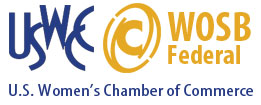
What That Empty Chair is Really Costing Your Audiology Clinic
When an audiologist’s chair sits empty, your clinic isn’t saving money — it’s quietly losing thousands every single day. Across the hearing healthcare industry, open positions are lasting months longer than ever before as the audiology talent shortage reaches crisis levels. With only about 700 new professionals entering the field each year, clinics nationwide are facing fierce competition for qualified audiologists and hearing instrument specialists. In this article, Staffing Proxy breaks down what that vacancy is really costing your practice — from lost hearing aid revenue and overtime pay to declining patient satisfaction and referral loss. You’ll learn how to calculate your clinic’s true vacancy cost, why traditional hiring methods are failing in today’s market, and what actually works to fill roles faster. Discover proven strategies used by top hearing health organizations to find their next hire and finally fill that empty chair.
It’s 9 AM on a Tuesday. Your schedule shows eight patients booked. But one chair sits empty. Not because of a cancellation, but because you still haven’t filled that audiologist position from three months ago.
It’s ok, though, you’re making it work. Your team is stretched, and patients are being squeezed in. Everyone’s managing.
But that empty chair? Yes, you may think you are saving on payroll. But the reality is, it is quietly draining thousands of dollars every single day - and the meter is running whether you notice it or not.
The vacancy crisis is hitting hearing health
If you’re struggling to fill an audiology position, you’re far from alone. Take it from someone who lives and breathes hearing health and audiology recruitment in the US - the industry is facing a workforce shortage that’s reaching critical levels. And with only around 700 audiologists and hearing instrument specialists graduating annually, matched with projected demand to grow 9% through 2034, the competition for qualified professionals has never been fiercer.
Here at Staffing Proxy, we can not express how many times we hear this frustration. Clinic owners tell us they’ve had positions open for months, watching qualified candidates get snapped up by competitors while their own hiring process drags on. In fact, some hearing health positions are now taking up to a year to fill, which is why we always advise our clients to start the recruitment process at least 1 year in advance.
But while you’re waiting for the right person, the financial impact is accelerating - often in ways that don’t show up on your P&L statement until the damage is done.
What that empty chair is really costing you
Let’s break down what’s actually happening when you have an open position. And fair warning: the numbers are bigger than most clinic owners realize.
The revenue walking out your door
In audiology, the average audiologist and hearing instrument specialists dispenses 11 hearing aids per month, with an average selling price of $2,162. That’s around $23,800 in revenue per month - or roughly $1,100+ per workday in missed opportunity - just on hearing aid sales alone.
Now factor in your average time-to-fill, which, according to our 2024-2025 research, can take 176 days on average. That’s just under $195,000 in potential revenue left on the table before you even account for diagnostic testing, follow-up appointments, accessories, or service packages.
But the worst part is the lost patients you can’t accommodate - because let’s be honest, when it comes to hearing health, many of them won’t wait - they will find another clinic that can see them sooner.
The costs you’re actively paying
But what about the costs you are actively paying while that seat is empty? Well, when you have an open role, the advertising, recruiter fees, interview time, background checks, psychometric testing - they all add up. Then there are the immediate operational costs you’re covering:
- Increased workload for remaining staff, often requiring overtime pay
- Higher temp staffing costs, which can quickly spiral
- Your own time. Every hour you spend reviewing resumes and conducting interviews is an hour you’re not working on strategic initiatives, seeing patients, or supporting your existing team
The ripple effect is hitting your team
This is where the hidden costs become most dangerous. Because when you have an empty seat, your remaining team members aren’t just doing their jobs - they’re covering for the empty position.
And that is where team fatigue sets in - and fast. When hearing health professionals are pushed beyond their capacity day after day, week after week, something has to give. Performance slips, patient care quality drops, and eventually, people start looking for the exit.
Remember: 41% of audiologists and hearing instrument specialists ultimately leave the profession entirely - the highest attrition rate among allied health professions. So, every time you push your existing team harder to cover a vacancy, you’re not just managing one gap, you’re potentially creating the next one.
The reputation damage you can’t see yet
And then there’s what happens to your clinic’s standing in the community.
Patients start noticing. When they’re waiting weeks for appointments or feel rushed through their visits, word spreads. But in a field built entirely on trust and relationships - especially, where you’re asking people to invest thousands in hearing aids - that damage is hard to measure but impossible to ignore.
Referral sources quietly shift their allegiances, too. When a physician’s office calls to schedule a patient and you can’t accommodate them for six weeks, they make a mental note. Next time, they’re calling the clinic that accommodated them earlier. And it is not because they’re not being disloyal - they’re simply doing what’s best for their patients (and as they should).
But your growth plans? They stall. That marketing campaign you’ve been excited about, the satellite location you wanted to open, the new services you could offer - all on hold because you simply don’t have the capacity.
The math that should keep you up at night
Let’s put real numbers to this. A clinic with one vacant audiologist position, open for just 45 days:
- Lost hearing aid revenue: $23,800/month × 1.5 months = ~$35,700
- Lost diagnostic and service revenue: estimated $10,000+
- Recruitment costs (job boards, agencies, interviews, credentialing): $15,000
- Overtime/temp staffing coverage: $8,000+
- Opportunity cost of owner’s time (15 hours/week × 6 weeks × $250/hour): $22,500
Total conservative estimate: $91,200 in just 45 days
And we’re not even counting the intangible costs: the referrals you didn’t get, the patients who went elsewhere and won’t come back, the marketing opportunities you missed, or the cumulative damage to team morale.
What helps speed up audiology and hearing instrument specialist recruitment?
If you’re thinking, “But I am trying to hire - it’s just taking forever,” you’re experiencing the fundamental disconnect in audiology and hearing instrument specialist recruiting today. And you’re not doing anything wrong. The reality is that audiology recruiting has become genuinely difficult, and understanding why can help you find a faster path forward.
The traditional approach - post on job boards, wait for applications, interview candidates, make an offer - simply doesn’t work in a market where there are more open positions than qualified candidates. By the time you’ve gone through three rounds of interviews, your top candidate has already accepted another offer.
Geographic limitations make this even worse because if you’re not in a major metropolitan area, your local candidate pool might be almost nonexistent. And convincing someone to relocate? That adds months to your timeline and thousands to your costs.
What actually speeds things up
So what makes the difference? From our experience working with audiology clinics across the country, here’s what speeds up the recruitment process:
Working with specialists who already know the candidates. Instead of posting and hoping, you’re tapping into an existing network of qualified professionals who are open to opportunities. That alone cuts weeks off your timeline.
Having realistic expectations about relocation and compensation. The candidates exist, but they might not be local. Understanding what it takes to attract someone - whether that’s relocation support, competitive salary, growth opportunities, or flexible benefits - helps you move faster when you find the right person.
Streamlining your interview process without sacrificing quality. You can be thorough and fast. It’s about being organized, responsive, and decisive. The clinics that fill positions quickly aren’t cutting corners - they’re just not letting weeks slip by between steps.
Recognizing when to bring in help. If a position has been open for 60+ days and you’re not seeing quality candidates, something needs to change. Sometimes that means adjusting your approach. Sometimes it means partnering with recruiters who specialize in audiology and hearing health and can access candidates you can’t reach on your own.
Start building your bench early. One of the smartest moves hearing health clinics can make is to start recruitment at least a year in advance. Think of it like building a bench - not every candidate will be a superstar, but having someone ready to step in when a vacancy opens can save you from weeks or months of disruption.
Calculate the cost of an open hearing health vacancy
Every day matters. If your clinic generates $1,100/day from a single audiologist, filling the role even 10 days faster = $11,000 in retained revenue.
It’s real money leaving your practice every single day that the position stays open.
Calculate your actual vacancy cost. Use your real numbers - your average revenue per audiologist or hearing instrument specialist, current time-to-fill, and recruitment expenses. In fact, to make this a more seamless experience, we’ve created a simple vacancy cost calculator to give you a directional understanding of the cost of your vacancy. Because sometimes, seeing the numbers in black and white changes the urgency.
Evaluate whether your current approach is working. If you’ve had a position open for more than 45-60 days with no strong candidates, it might be time to try something different. That could mean adjusting your job description, expanding your geographic search, or bringing in specialized recruiting help.
Consider the ROI of speed. Professional staffing solutions aren’t free, but neither is a three-month vacancy. When you calculate what you’re losing every week - in revenue, in team strain, in opportunities - the math often speaks for itself.
At Staffing Proxy, we’ve seen how the right approach transforms this equation. When you work with specialists who understand audiology, maintain active relationships with qualified candidates, and move at the speed the market demands, positions that were open for months get filled in weeks - often with candidates clinic owners didn’t know existed.
Ready to see what your vacancy is actually costing you? Use our vacancy cost calculator below to run your potential vacancy cost numbers - and then let’s talk about how to make sure you never have to watch those dollars disappear again.
Ready to fill that empty chair?
At Staffing Proxy, we specialize in connecting audiology and hearing health clinics with qualified professionals who are ready to start making an impact. If you’re tired of watching positions sit vacant while your costs climb, let’s have a conversation. We’ll help you build the team your clinic deserves - without the months-long wait.

